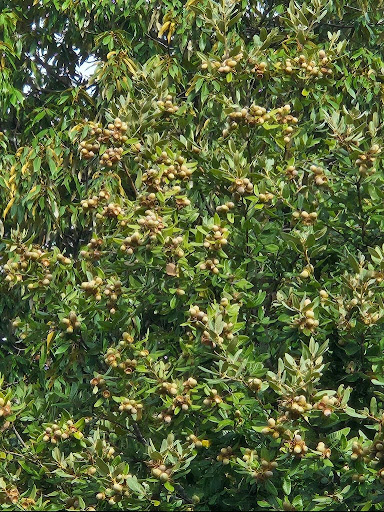Overview
K’iwinya’n: The Preferred Acorn of Hupas (Na:tinixwe)

Author: Melodie George Moore (Hupa), Natalie Marie Scott (Hupa), Frederica Bowcutt PhD
Lesson partner: Rebecca Lowry, Humboldt County Office of Education
Grade(s): 6-8
Suggested Amount of Time: 1 day (50 minutes)
Curriculum Themes
- History
- Cultural Strengths
- Law/Government
- Relationship to Place
- Cross Curricular Integration
Learning Goals
Students will integrate information presented in different media or formats to develop a coherent understanding of the importance of Tanoak acorns to people and to a healthy ecosystem.
Students will analyze and interpret data to provide evidence for the effects of healthy tanoak availability on organisms and populations of organisms in an ecosystem.
Apply scientific principles (and traditional ecological knowledge) to design a method for soaking acorns for food while monitoring and minimizing the human impact on the environment.
Lesson Overview
Lessons in this unit could be used for a week, or up to a month. Students will receive a foundational understanding in Hupa culture, traditional ecological knowledge and environmental science. Opportunities for written/multimedia expression as well as critical thinking are integrated throughout lessons. This unit prepares students for the interactive “Life of an Acorn Game” unit. Authors recommended completing this unit before the game unit.
Essential questions:
Why do Hupa peoples prefer Tanoaks?
Why should I prefer/prioritize acorn trees over all other trees?
What are the expected results of promoting healthy acorn trees?
What do I need to understand to unlock the acorn as a food source?
Teacher Background
The Yurok, Karuk, and Hupa peoples have lived in the region since time immemorial, maintaining a strong connection to the land, rivers, and natural resources. Their cultures are deeply rooted in traditions like basket weaving, ceremony, and storytelling. However, the arrival of European settlers during the California Gold Rush in the mid-19th century devastated these communities. Colonization brought forced displacement, massacres, environmental destruction, and the erosion of Indigenous languages and cultural practices. This invasion of colonizers led to the poisoning of rivers, deforestation, and the destruction of ecosystems on which the Yurok, Karuk, and Hupa peoples relied. The introduction of commercial industries, such as fur trapping, timber, and fishing, further undermined the tribes' traditional ways of life. At the same time, the U.S. government sought to exterminate, human traffic and enslave Native populations, and assimilate survivors through boarding schools that attempted to erase languages and cultural practices. This complex and painful history of colonization has had long-lasting effects on Indigenous communities, but despite these challenges, Native peoples have shown incredible resilience in preserving their cultures and fighting for their rights and sovereignty.